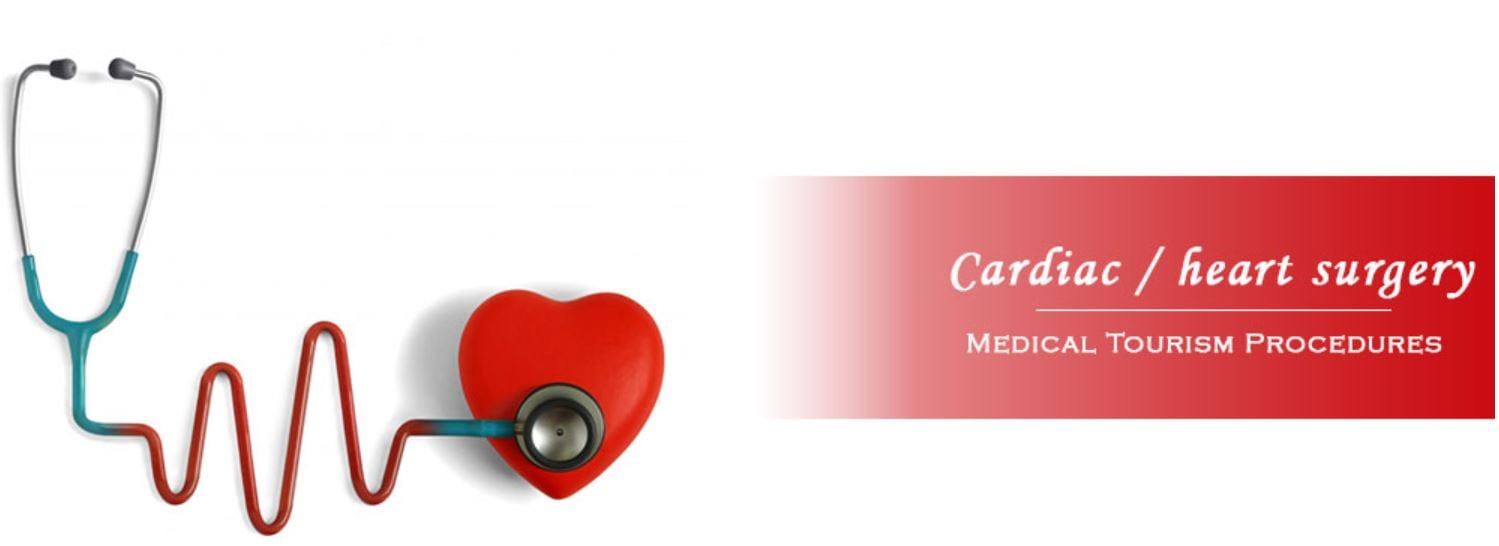Find Coronary Angioplasty Abroad with Make Medical Trip
With both access and cost proving to be significant obstacles for patients in the United States, Australia and the United Kingdom, many people are choosing to look further afield for angioplasty stents. Though the idea of traveling to a foreign country for cardiology treatment may seem like a daunting idea, with a good amount of research and expert guidance you can find angioplasty treatment abroad which is both quality and affordable.
If you are looking for angioplasty abroad then quality and safety will probably be your biggest concern. There are a number of accreditations and certifications to look out for which indicate whether the hospital meets standards of safety and competence.
Although there is no unified certifying body for cardiology, accreditations from groups like the European Society of Cardiology, the American College of Cardiology or the Indian Association of Clinical Cardiologists are good indicators of quality. In terms of the hospital itself, accreditations from the Joint Commission International can indicate that standards of patient safety are being met, whilst the ISO 9001 certificate confirms that a number of quality management systems are in place. The experience, education and qualifications of the cardiologist and their staff is another important factor to consider.
Perhaps the biggest concern you might have about traveling for an angioplasty is the language barrier and cultural differences. Finding a clinic that provides services for international patients can help ease any worries you might have about undergoing treatment abroad. Many hospitals offer translation and interpretation services for international patients, and they are also likely to be staffed by English-speaking surgeons and staff. Additional services that might be offered by a hospital experienced in treating international patients include airport transfers, hotel booking, car rental and assistance in organizing local tourism excursions.
Although the recovery time following an angioplasty is relatively short – you will usually be kept in overnight for observation and need a few days’ rest – it is worth inquiring with your hospital about aftercare services. You will need to refrain from strenuous activity in the days after the procedure and it is unlikely that you will be cleared to fly for at least 3 days, so finding a hospital which is able to advise you on the length of your stay abroad is important. If you have been fitted with a stent balloon in your groin, you will also need to restrict movement and keep your leg fully straight in the days following angioplasty.
Though it is not always possible to meet your surgeon face-to-face before traveling abroad for surgery, some hospitals offer consultations online or by phone, allowing you to build a general impression of the surgeon before deciding on a hospital.
How much does an angioplasty cost?
The number one factor influencing the cost of an angioplasty is location. There are huge variations in price to be found around the world, with many people choosing to travel abroad for their angioplasty procedure in order to keep the costs down.
In the United States the average cost of an angioplasty is approximately $28-30,000. Even between individual states, however, this can vary from as low as $15,000 to anywhere in the region of $50,000. The cost of an angioplasty in the United States is generally higher in areas where cardiologists are in-demand or where waiting lists are particularly lengthy.
Angioplasty in the United Arab Emirates for $13,207
The UAE has become one of the world’s leading tourist destinations in recent years, and the country is now building a reputation as a hub for medical tourism. Hundreds of patients travel to Abu Dhabi and Dubai each year to take advantage of their specialized cardiology departments. An angioplasty package in the United Arab Emirates starts from $13,207.
Angioplasty in India for $6,000
India is home to a range of specialist cardiology hospitals and clinics offering angioplasty for around $6,000. Many Indian cardiologists have trained and worked overseas in countries such as the UK and the US, whilst the high number of English speakers in India makes it popular with international patients. The average cost of an angioplasty package in India is around $6,000.
Angioplasty in Israel for $13,500
Particularly popular with patients from Europe and Russia, Israel has a range of leading cardiologists and hospitals in cities such as Tel Aviv, Jerusalem, and Tzrifin. An angioplasty in Israel can be found for around $13,500.
Angioplasty in Spain for $13,000
The city of Vigo in Spain is home to a JCI-accredited hospital offering quality angioplasty procedures for around $13,000. Patients from across the continent have been visiting Spain for medical care for many years, with many of them now traveling for cardiology treatments.
Angioplasty in Germany for $17,000
Germany is a popular destination for cardiology procedures, particularly with patients from Russia and the Middle East, as well as the US and Europe. Compared to the US, the cost of healthcare in Germany is very reasonable, however, it is the high standard of care, world-class equipment, and leading specialist that attract many international patients to Germany. An angioplasty package at one of Germany’s top hospitals costs around $17,000.
Angioplasty in Poland for $3,950
Poland has many advanced hospitals and clinics, but procedure costs in Poland are still often much lower than in neighboring countries. Some specialist hospitals in Poland offer a range of cardiology packages, and an angioplasty package including hospital stay costs around $3,950.
Why does an angioplasty cost so much?
If you are suffering from coronary artery disease and other heart-related diseases, there are a range of both surgical and non-surgical treatment options available depending on the severity of your condition. One such non-surgical procedure is angioplasty, which is used to unblock the arteries and re-establish sufficient blood flow to the heart.
A coronary angioplasty must be carried out by a specialist team of cardiologists, assistants and nurses in a catheterization operating theater. The procedure is often carried out whilst a heart attack is taking place as a lifesaving measure in order to quickly free the arteries, many heart disease patients also decide to have an angioplasty as precautionary measure before a heart attack occurs. It is generally advised that an angioplasty be used alongside changes in lifestyle in order to combat heart disease.
Because changes to diet and lifestyle are suggested by physicians as the primary method of tackling coronary artery disease, finding information about the cost of angioplasty can be difficult, particularly in countries without universal health coverage like the United States. Likewise, finding access to an angioplasty procedure can prove equally challenging. With this in mind, Make Medical Trip is always available to help you find angioplasty abroad, and this content is designed to help you find quality and affordable treatment around the world.
There are a number of factors which ultimately affect the final cost of an angioplasty, and the complicated nature of the procedure means that it is difficult for hospitals and cardiologists to give a precise estimate before the procedure.
The number of stents required and the type of stents used will also impact the final price. A stent is a small tube-shaped device that is placed inside the artery to hold it open and allow the blood to flow more easily. The specialist will be able to recommend which type of stent is most suitable, and how many stents are required. In the US for example, each additional stent can cost several thousand dollars, and modern types such as drug-eluting stents (DESs) or bioresorbable vascular scaffolds (BVSs) cost more than a standard bare metal stent.
In some cases, the angioplasty can be carried out without the need for a permanent stent. These cases will cost less, and involve simply inserting a catheter into the blood vessel, and then inflating a small balloon in order to widen the artery. The balloon and catheter are then removed.
A thorough consultation is required prior to any treatment being scheduled, during which the cardiologist can develop an idea of which angioplasty technique is most appropriate and how urgently the procedure needs to be carried out. Likewise, the consultant can also outline any additional costs involved with aftercare and medication. Once this is completed it will usually become clear just how much the procedure will cost. It is important that you ask for full price transparency before committing to any treatment: many hospitals do not include prices for essential provisions such as anesthesia and theater costs in the initial quote.
There are a number of different techniques for an angioplasty, with the cardiologist deciding on which one to use depending on the severity of each individual case. Balloon angioplasty is the most commonly-used technique in modern-day cardiology, with older methods such as atherectomy and rotablation used only rarely. A small metal tube known as a stent is often used during the angioplasty procedure to keep the artery open.
Whilst theater equipment, surgical instruments and medication can be expensive, most of your outlay on an angioplasty procedure will be on the experience and expertise of your cardiologist and their team of specialists. Angioplasty is a complex procedure which can only be performed by a highly-qualified cardiology specialist. The many years of medical education, training and practical experience required to reach such a level of competence makes up a large proportion of your final costs. If a cardiologist has decades of experience or has a particularly good reputation, you can expect to pay significantly more for their expertise (although reputation alone brings no guarantee of quality). The operating team present during an angioplasty must also undergo extensive cardiology training. The complex nature of the procedure also results in the costs of specialist tools, and devices such as stents, being significantly higher than for a routine operation.
In many countries, angioplasty is not considered to be an essential procedure unless it is being used in a life-threatening situation i.e. during a heart attack. This means that many insurance companies, particularly in the United States, are reluctant to cover it and the cost of the procedure is subsequently pushed on to the individual patients.




